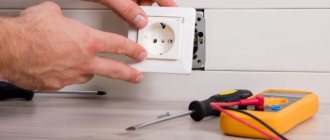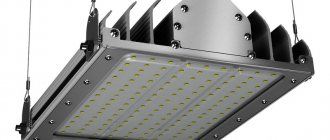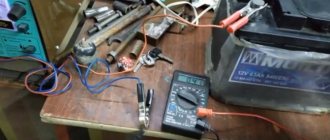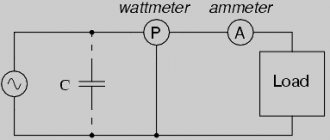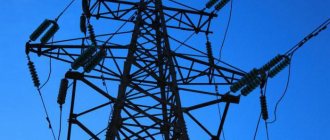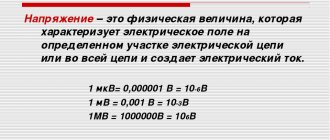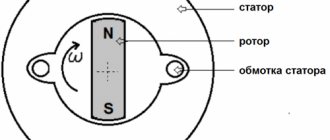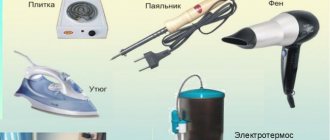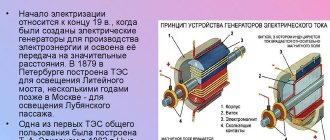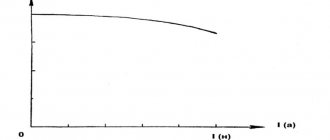First aid is a set of measures aimed at restoring or preserving the life and health of the victim. It should be provided by someone who is next to the victim (mutual aid) or by the victim himself (self-help) until a medical worker arrives. The life of the victim and, as a rule, the success of subsequent treatment depends on how skillfully and quickly first aid is provided. Therefore, everyone should know how to provide first aid and be able to provide it to the victim and themselves.
The sequence of actions when providing first aid to a victim:
- eliminating the impact of dangerous and harmful factors on the victim’s body (freeing him from the action of electric current, removing him from a contaminated atmosphere, extinguishing burning clothing, removing him from water, etc.);
- assessment of the victim’s condition;
- determining the nature of the injury that poses the greatest threat to the life of the victim, and the sequence of actions to save him;
- carrying out the necessary measures to save the victim in order of urgency (restoring the airway, performing artificial respiration, external cardiac massage, stopping bleeding, immobilizing the fracture site, applying a bandage, etc.);
- maintaining the victim’s basic vital functions until medical personnel arrive;
- calling an ambulance or a doctor or taking measures to transport the victim to the nearest medical facility.
Release from the action of electric current.
In case of electric shock, it is necessary to free the victim from the action of the current as quickly as possible, since the severity of the electrical injury depends on the duration of its effect on the body. You can turn off the electrical installation using a switch, knife switch or other disconnecting device, as well as by removing fuses, plug connections, creating an artificial short circuit on the overhead line (overhead line) by “throwing”, etc.
If it is not possible to quickly turn off the electrical installation, then measures must be taken to separate the victim from the live parts that he touches. In all cases, the person providing assistance should not touch the victim without taking proper precautions, as this is life-threatening. He must also ensure that he himself does not come into contact with a live part or live step while in the zone of spreading of the ground fault current.
At voltages up to 1000 V, to separate the victim from live parts or wires, use a rope, stick, board or some other dry object that does not conduct electric current. You can pull the victim away from live parts by clothing, while avoiding touching surrounding metal objects and parts of the victim’s body not covered by clothing. To isolate the hands, the person providing assistance, especially if he needs to touch the body of the victim who is not covered by clothing, must wear insulating gloves or wrap his hand in a scarf, put a cloth cap on it, pull the sleeve of a jacket or coat over his hand, throw a rubber carpet or rubberized material over the victim ( raincoat) or just dry cloth. You can also isolate yourself by standing on a rubber carpet, a dry board or some kind of non-electrically conductive bedding, a bundle of dry clothes, etc. When separating a victim from live parts, you should act with one hand.
If an electric current passes into the ground through the victim and he convulsively squeezes the current-carrying element in his hand, you can cut the wire with an ax with a dry wooden handle or make a break using a tool with insulating handles. It is necessary to cut the wires in phases, i.e. cut the wire of each phase separately.
At voltages above 1000 V, to separate the victim from live parts, it is necessary to use protective equipment: wear dielectric gloves and boots and use a rod or insulating pliers designed for the appropriate voltage. On 6-20 kV overhead lines, when it is impossible to quickly turn them off from the supply side, it is necessary to create an artificial short circuit to disconnect the overhead line. To do this, a flexible non-insulated conductor must be thrown onto the overhead line wires, which must have a sufficient cross-section to avoid burnout when a short circuit current passes through it. Before throwing a conductor, one end of it must be grounded (attached to the body of a metal support, a grounding descent or a separate ground electrode, etc.), and it is advisable to attach a load to the other end for ease of throwing. When throwing a conductor, you must use dielectric gloves and boots.
The person providing assistance must be aware of the danger of step voltage if the live part is lying on the ground. You need to move in this area with extreme caution, using protective equipment for insulation from the ground (dielectric galoshes, boots, carpets, insulating stands) or objects that do not conduct electricity well (dry boards, logs). Without protective equipment, you should move in the zone of spreading current from a ground fault by moving your feet on the ground and without lifting them from one another. After separating the victim from live parts, he should be taken out of this area at a distance of at least 8 m from the live part.
Electric Shock Hazard
The danger of electric shock occurs not only when working with electricity, but also in everyday life. Employees whose occupation is directly related to electric current are more at risk. Fatalities from electrical injuries, according to statistics, depending on the type of industry, are about 15-30% annually. Basically, this happens in case of inattention and accidental contact with live wires. That is why compliance with safety precautions is very important when working with electric current.
Voltage over 35-40 Volts poses a danger to humans; it can lead to death without timely medical assistance. The degree of damage directly depends on the strength of the current, the design of the electrical network, the power source, contact with a damp environment and a number of other factors. Both direct and alternating current pose a threat.
Electric shock to all systems of the body is life-threatening, which leads to instant cardiac arrest. At the same time, the muscles contract, and the victim cannot independently release the live wire. Therefore, when working, electricians touch the wires with the outer part of their palm, so that in the event of an electric shock they do not grab the live cable, squeezing it even more tightly.
The main causes of electrical injuries at work can be identified:
- working with live cables without complying with safety standards;
- poor-quality grounding of electrical installations;
- lack of fencing for energized equipment;
- carrying out electrical installation work without using protective equipment;
- direct contact with wires where insulation is damaged or missing;
- faulty wiring, which can lead not only to electric shock, but also to fire;
- if “weak” connecting wires are used for high-power equipment that cannot withstand its current strength;
- increased humidity in places where welding work is performed, etc.
The main causes of electric shock to humans
First aid
Methods of providing first aid depend on the condition of the victim. The signs by which you can quickly determine the health status of the victim are as follows:
- consciousness: clear, absent, impaired (the victim is inhibited or excited);
- color of the skin and visible mucous membranes (lips, eyes): pink, bluish, pale;
- breathing: normal, absent, impaired (irregular, shallow, wheezing);
- pulse in the carotid arteries: well defined (rhythm correct or incorrect), poorly defined, absent;
- pupils: dilated, constricted;
With certain skills and self-control, the person providing assistance must assess the condition of the victim in a minute and decide in what volume and order assistance should be provided to him. If the victim is unconscious, it is necessary to monitor his breathing and, in case of breathing problems due to the recession of the tongue, move the lower jaw forward. To do this, with four fingers of both hands, grab the lower jaw from behind by the corners and, resting your thumbs on its edge below the corners of the mouth, pull it back and push it forward so that the lower teeth stand in front of the upper teeth. It should be maintained in this position until the tongue stops sinking. If the victim breathes very rarely and spasmodically, but his pulse is palpable, artificial respiration should be started immediately.
If the victim has no consciousness, pulse, breathing, the skin is bluish, and the pupils are dilated, you should immediately begin to restore the vital functions of the body by performing artificial respiration and external cardiac massage.
Basic rules of first aid
Electrical injury means damage to human systems and organs due to exposure to current. Every year in our country over 30,000 people die due to electric shock. Unfortunately, no one is immune from this phenomenon, because electricity surrounds us on all sides.
Our body is considered the best conductor of electricity. Moreover, you can suffer from current without even touching live devices. This happens, for example, if there is an electrical leak or when an electric arc forms.
Artificial respiration.
Artificial respiration is carried out in cases where the victim is not breathing or breathing very poorly (rarely, convulsively, as if with a sob), and also if his breathing is constantly deteriorating, regardless of what caused it: electric shock, poisoning, drowning, etc. The most effective method of artificial respiration is the “mouth to mouth” or “mouth to nose” method, since this ensures that a sufficient volume of air enters the victim’s lungs.
To carry out artificial respiration, the victim should be laid on his back, unbuttoned clothing that restricts breathing and ensure the patency of the upper respiratory tract, which in the supine position and in an unconscious state is closed by a sunken tongue. In addition, there may be foreign contents in the oral cavity (vomit, slipped dentures, sand, silt, grass, if the person was drowning), which must be removed with the index finger wrapped in a scarf (cloth) or bandage, turning the victim’s head to the side. After this, the person providing assistance is located on the side of the victim’s head, puts one hand under his neck, and with the palm of the other hand presses on the forehead, throwing his head back as much as possible. In this case, the root of the tongue rises and frees the entrance to the larynx, and the victim’s mouth opens. The person providing assistance leans towards the victim’s face, takes a deep breath with his open mouth, then completely tightly covers the victim’s open mouth with his lips and exhales vigorously, inhaling air into his mouth with some effort; at the same time, he covers the victim’s nose with his cheek or the fingers of his hand on the forehead. In this case, be sure to observe the victim’s chest, which should rise. In order for the exhalation to be deeper, you can gently press your hand on the chest to help the air leave the victim’s lungs.
First aid for lightning strikes
When a person has received an electric shock from lightning, first aid is provided depending on the condition of the victim. At the same time, it is important to remain calm and not use various traditional methods, so as not to aggravate the victim’s condition even more.
Before the ambulance arrives, people near the victim are advised to begin providing first resuscitation measures. If the person struck by lightning is conscious and his condition is not in danger, you can resort to the following actions:
- move the victim to a safe place;
- take off all clothes and give a change of clothes;
- put in a comfortable position and cover well with a warm blanket;
- try to calm the victim;
- offer to drink a sedative;
- If there are burns, treat them with an antiseptic and then bandage them.
If lightning damage is serious, it is important to provide immediate assistance, while simultaneously calling an ambulance. In this condition, the actions should be as follows:
- if a person is unconscious, you need to feel and check the pulse. In its absence, artificial respiration and indirect cardiac massage are promptly performed;
- before carrying out such measures, the patient is laid on a flat surface and the top of his clothing is unbuttoned to increase air flow;
- As soon as the person comes to his senses, he should be given some cold water to drink.
As for sedatives and painkillers, it is better to wait for doctors to arrive, who will assess the victim’s condition and, if necessary, administer painkillers.
Electric shock is a very dangerous condition. And the best preventative measure is to use devices carefully and follow safety rules.
External cardiac massage.
If there is not only breathing, but also a pulse in the carotid artery, artificial respiration alone is not enough to provide assistance, since oxygen from the lungs cannot be transferred by the blood to other organs and tissues. In this case, it is necessary to restore blood circulation artificially, for which external heart massage should be performed. The indication for resuscitation measures is cardiac arrest, which is characterized by a combination of the following signs: pallor or cyanosis of the skin, loss of consciousness, absence of a pulse in the carotid arteries, cessation of breathing or convulsive, irregular breaths. In case of cardiac arrest, without wasting a second, the victim must be laid on a flat, hard base: a bench, the floor, or, in extreme cases, a board placed under his back.
If one person is providing assistance, he is located on the side of the victim, and, bending down, gives quick energetic blows (using the “mouth to mouth” or “mouth to nose” method), then unbends, remaining on the same side of the victim, Place the palm of one hand on the lower half of the sternum, stepping back two fingers higher from its lower edge, and lift the fingers. He places the palm of his second hand on top of the first across or lengthwise and presses, helping by tilting his body. When applying pressure, your hands should be straightened at the elbow joints. The pressure should be applied in quick bursts so as to displace the sternum by 4-5 cm, the duration of pressure is no more than 0.5 s, the interval between individual pressures is no more than 0.5 s. During pauses, the hands are not removed from the sternum if assistance is provided by two people, the fingers remain raised, and the arms are fully straightened at the elbow joints.
If the revival is carried out by one person, then for every two deep injections he makes 15 pressures on the sternum, then again makes two injections and again repeats 15 pressures, etc. In a minute it is necessary to make at least 60 pressures and 12 blows, i.e. perform 72 manipulations, so the pace of resuscitation measures must be high. When two people participate in resuscitation, the “breathing-massage” ratio is 1:5, i.e. after one deep insufflation, five compressions are applied to the chest.
Heart massage
Cardiac muscle massage, as well as artificial respiration, is the main resuscitation measure. With the help of these procedures, it is possible to restore the heartbeat and breathing of the victim.
As a rule, both procedures are performed alternately:
- as with artificial respiration, the patient’s head is tilted back and freed from foreign fragments;
- take one strong breath, then 5 or 10 straight pushes with hands stacked on top of each other;
- on the second approach they also take one breath and five pushes;
- the third approach requires taking 5 deep breaths and then 10 pushes.
During resuscitation measures, the victim’s nose should be pinched, and the patient’s hands should lie at the level of the solar plexus.
Video
Electric shock
XXI CENTURY Candy Fudge Scented water
266 ₽ More details
Video baby monitor Motorola MBP36S (white)
12900 ₽ More details
Women's dresses short
Basic safety rules at home
- When working in wet areas, you must use a rubber mat and gloves;
- Before connecting a new electrical device to the network, you must carefully study the instructions and strictly follow all instructions for its operation;
- Avoid all dangling power lines, do not touch them under any circumstances, and do not approach transformer installations;
- When operating industrial and household equipment, it is necessary to urgently stop using electrical equipment if sparks appear and a burning smell is felt. It is also prohibited:
- connect several powerful electrical appliances to one outlet at the same time;
- touch wires and electrical equipment with wet hands or while on a wet floor;
- use devices other than for their technical purpose;
- bend equipment cables, both during operation and during storage, so as not to damage the insulation, etc.
- Check for the presence of electricity in cables with bare hands, touch bare wires;
- It is strictly forbidden to use faulty sockets, switches, extension cords;
- Touch live electrical devices with wet hands;
- Leave household appliances (irons, fireplaces and wind blowers, electric stoves) unattended for a long period of time;
- When replacing lighting fixtures, all work is carried out strictly with dry hands, standing on a dry surface;
- In the event of an electrical appliance fire, turn off the circuit breaker; under no circumstances try to unplug the cord from the outlet.
- When carrying out wiring repairs, completely de-energize the entire network.
Warning signs about approaching a danger zone
Basic protection against electric shock
